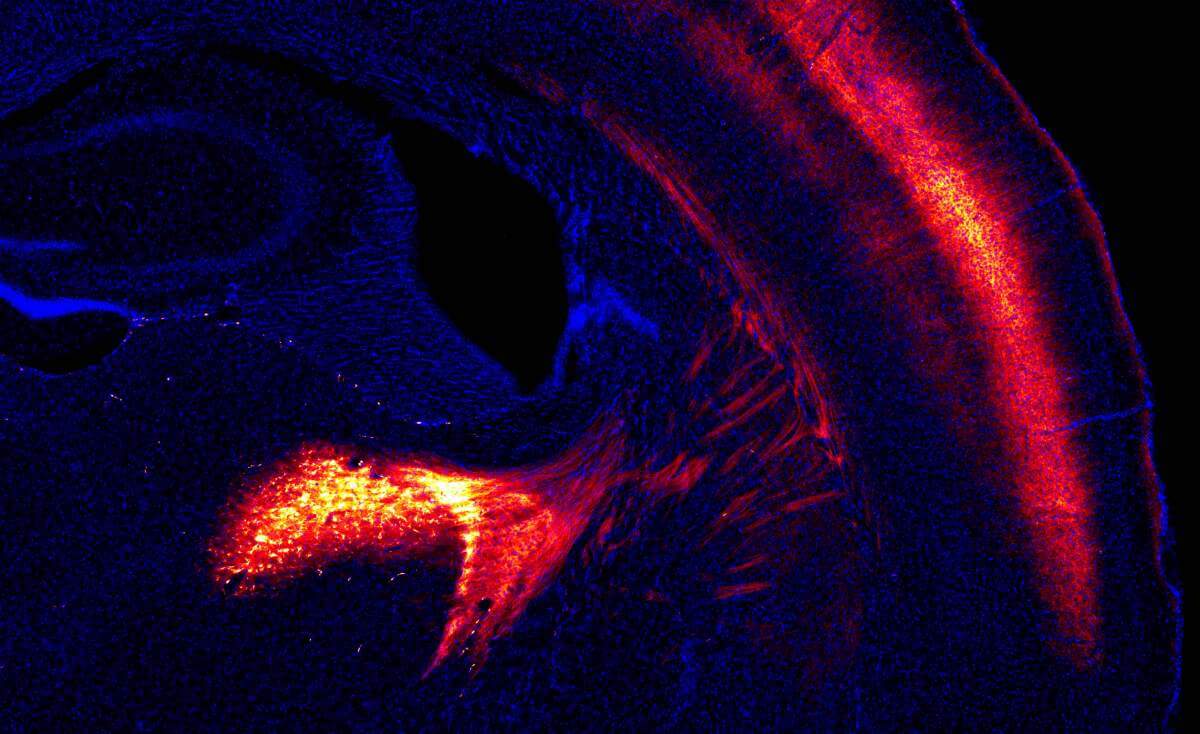Weizmann Institute of Science scientists have developed a research tool that will shed new light on communication pathways between nerve cells in the brain

Will the annoying mosquito, often associated with bites and disease transmission, help us better understand the mysteries of the brain? Prof. Ofer Yizhar and his team in the Department of Neurobiology of the Weizmann Institute of Science developed a new tool for studying the messages transmitted between nerve cells in the brain, which is based on a light-sensitive protein derived from mosquitoes. The findings of the study published today in the scientific journal Neuron, will make it possible to examine with unprecedented resolution the relationship between communication pathways in the brain and a variety of neurological and psychiatric conditions, in an attempt to develop more targeted and effective treatments for a variety of neurological diseases.
Prof. Yizhar's laboratory specializes inOptogenetics - An innovative research method that allows to "turn on" or "turn off" nerve cells using light. This method is based on laboratory mice that have been genetically engineered to express in their nerve cells proteins called "rhodopsins" - light-sensitive molecules that are used, among other things, as light receptors in the retinal cells in our eyes. When light is projected onto the nerve cells in these mice - with the help of tiny optical fibers - changes occur in the electrical voltage of the cell membranes, and as a result, the nerve cells are turned on or off.

In recent years, optogenetics has produced some groundbreaking research in laboratories around the world, but the performance of the proteins currently in use are far from perfect - especially when it comes to controlling the release of neurotransmitters at synapses - the tiny communication junctions between nerve cells. Prof. Yizhar and a large team from his laboratory, including Dr. Mathias Mann, Dr. Inbar Sharaf Sinik and Pritish Patil, set themselves the goal of creating a new type of optogenetic tool, which would shed new light on the communication between nerve cells.
""This is a very exciting technology, because it will allow us to reveal the roles of different communication pathways in the brain in a way that was not possible until now"
"We decided to look around and see what solutions exist in nature," says Prof. Yizhar. It turns out that in nature there are different versions of the rhodopsin molecule. Fish, insects and even mammals express these proteins not only in their eyes, but in various body parts - apparently as part of the mechanism for regulating the biological clock and perhaps even for additional purposes that have yet to be discovered. The research team started with a long list of potential rhodopsin proteins and first tried to evaluate which ones would be best used for studying communication pathways between nerve cells. In the end, the researchers narrowed the list down to two - rhodopsin derived from the Abu Nafha fish and rhodopsin derived from the mosquito.
But it was the protein from the mosquito that was found to be the most suitable to be used as an optogenetic tool, because its activation with light silenced the activity in the synapses and thus the communication pathways between nerve cells in the brain. To test the effectiveness of the new tool, the researchers put it to the test against a drug that reduces the strength of communication between nerve cells. They showed that the effect of the new tool was just as effective as the drug, but while the drug affects all parts of the brain indiscriminately, the new optogenetic tool allowed them to affect the communication between specific nerve cells in a targeted and precise manner both in space and time. Later, the scientists demonstrated the capabilities of the new tool by blocking the release of the neurotransmitter dopamine on one side of the brain only in the engineered mice. Illumination of the brain through an optical fiber resulted in a change in the behavior of the mice, which lasted only during the activation of the optogenetic tool. A few minutes after the researchers turned off the light, the mice returned to behaving normally. This was evidence that the new method causes reversible changes in the functioning of the brain, so that it is possible to investigate the roles of specific pathways linking different brain regions.
"Mosquito rhodopsin will allow us to focus on communication between specific nerve cells," says Prof. Yizhar. "This is a very exciting technology, because it will allow us to reveal the roles of different communication pathways in the brain in a way that was not possible until now. We believe that this mosquito protein will pave the way for the development of a whole family of new optogenetic tools for brain research."
at the beginning of the year Select the scientific journal Nature In Prof. Yizhar's optogenetics research, he lists the "seven technologies that will affect the world of science in 2021". This research is a significant anchor in the new Institute for Neuroscience and Neuroscience - a flagship project of the Weizmann Institute that will be established with an investment of tens of millions of dollars and will bring together leading research groups in various fields who will join hands in researching the mysteries of the brain.
Research students Eyal Biton, Shaked Pelagi, Assaf Gat, Dr. Julian Dean, Dr. Yonas Vitek, Ido Davidi, Rivka Levy and Anna Litvin from Prof. Yizhar's group also participated in the study.
More of the topic in Hayadan:
